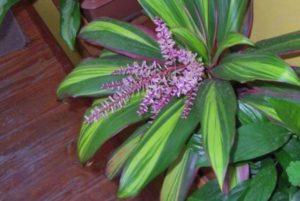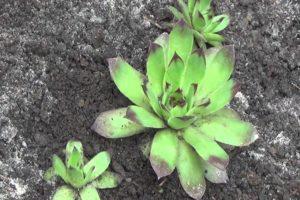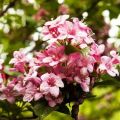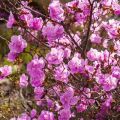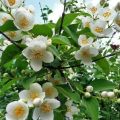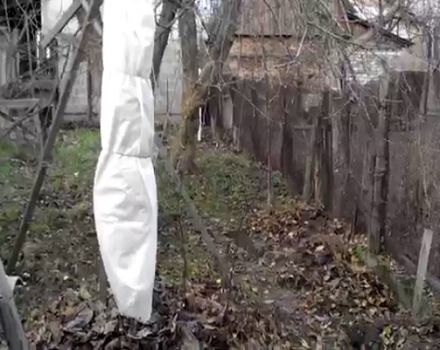Planting, growing and caring for buddleya in the open field, description of varieties
With the help of flower crops, you can create a truly fabulous garden. There are a huge number of unpretentious varieties of flowers. One of them is buddleya. Growing a buddley is a fairly simple exercise. The main thing is not to forget about caring for the shrub, and then it will delight the eye with its beautiful flowering for a very long time.
Content
- 1 Description
- 2 Features and Benefits
- 3 Kinds
- 3.1 David
- 3.2 Royal Red
- 3.3 Alba
- 3.4 Black Knight
- 3.5 Orchid Beauty
- 3.6 Flower Power
- 3.7 Harlequin bush
- 3.8 Border Beauty
- 3.9 Empire blue
- 3.10 Mix
- 3.11 Pink Delight
- 3.12 Ile de france
- 3.13 Vicha
- 3.14 Wilson
- 3.15 Lovely
- 3.16 White-flowered
- 3.17 Alternate-leaved
- 3.18 Snowy
- 3.19 Japanese
- 3.20 Spherical
- 3.21 Tricolor
- 3.22 Volatile
- 3.23 Indian
- 4 Outdoor planting
- 5 How to plant
- 6 Care
- 7 Reproduction
- 8 Diseases and pests
- 9 Collection and storage of seeds
- 10 Possible mistakes
- 11 Use in garden design
- 12 Reviews
Description
Buddley is also called Canadian lilac. By the type and location of inflorescences, the shrub really resembles a lilac. The inflorescence consists of a large number of small, five-leafed flowers, collected in a panicle. The length can be different, from 20 to 45 cm. There are varieties with a spherical type of inflorescence.
The shade of the petals is usually lilac, with a yellow border in the middle. There are also light pink, red, white, burgundy varieties. The inflorescences do not have a pronounced aroma, but at the same time they belong to melliferous plants. Bees, butterflies and other insects constantly fly near the bush.
Bushes are tall, they can reach a height of 1.5 to 3 m when grown in the southern regions. In areas with cold winters buddleya grows up to 2 m. The leaves are long, rich green hue.
Winter hardiness may vary depending on the variety. Some varieties can withstand frosts down to -20 degrees. And some are thermophilic and cannot stand temperatures below -10 degrees.
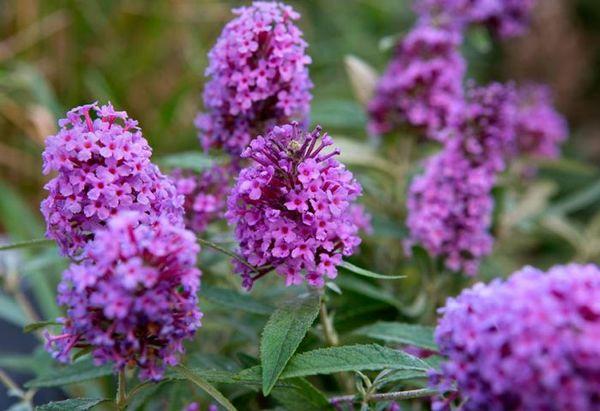
Features and Benefits
The homeland of this shrub is China. In natural conditions, buddleya comes in only four shades - white, lilac, cherry and red. The rest of the varieties with different colors of inflorescences were created by breeders.
The advantage of buddlea is, first of all, a beautiful and unusual inflorescence. Also, among the varieties, you can find a large number of different shades of flowers, ranging from saturated to white specimens. It is also worth noting that the shrub is unpretentious in cultivation.Buddleya has a long flowering time and fast growth after planting.
Kinds
Although there are not so many varieties of buddlei in nature, breeders have bred a large number of different varieties. First of all, shrub hybrids differ in the shade of flowers.
David
A mixture of inflorescence colors can be found if you pay attention to the variety of David's buddley. This variety is considered the most common and popular among summer residents. The variety is characterized by spreading bushes. The bushes are easy to form, and the inflorescences exude a light honey aroma during flowering.
Royal Red
The Royal Red variety is characterized by rich burgundy-lilac inflorescences, collected in long panicles. The length of these panicles is from 30 to 45 cm. An adult bush of a spreading type. The height is usually from 2 to 3.5 m. The width of the shrub is from 2 to 4 m.
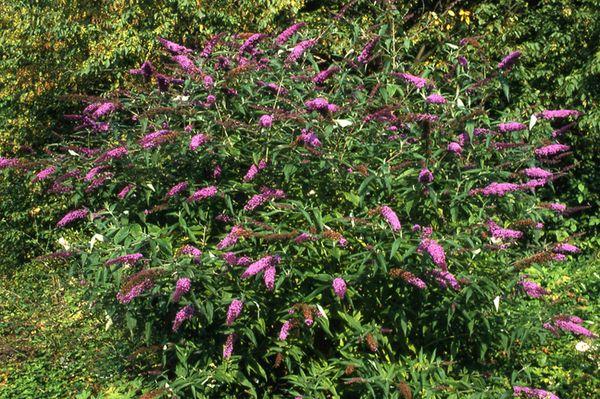
Alba
The shrub of the Alba variety is medium in size, grows up to 2 m in height, not spreading, strongly leafy. The petals are white. The flowering period is in July and lasts until October.
Black Knight
Black Knight is characterized by rich purple inflorescences with a yellow border in the middle of the flower. The shrub is medium-sized.
Orchid Beauty
Low-growing variety, grows in height up to 1.5 m, not spreading. The shade of the petals of the flowers is lilac-pink. The flowering period is late, starting in August and ending at the end of September.
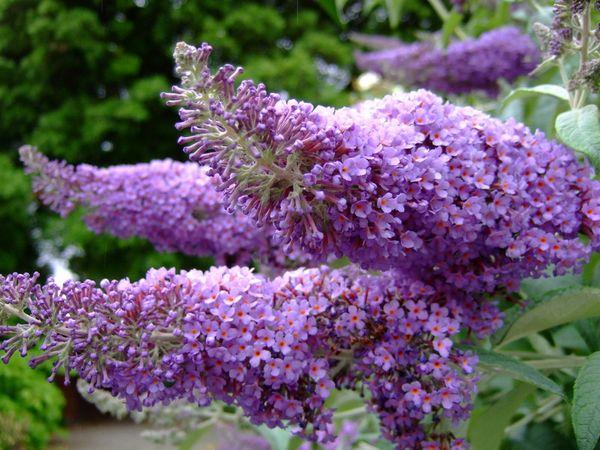
Flower Power
Bushes grow up to 2 meters. Inflorescences are long, about 30 cm. The shade of petals is purple with orange. The flowering period is short, only a month and a half.
Harlequin bush
Inflorescences are small in size, up to 30 cm in length. The shade of the petals is deep purple.
Border Beauty
Sprawling bush with drooping branches. The plant grows in height up to 1.5 m, in width - about 2 m. Flowers of a lavender shade, unlike other varieties, the inflorescence has a strong honey aroma.

Empire blue
This variety has an unusual shade of inflorescences, blue-violet petals. An adult shrub of a spreading type, branches are of a drooping type. The bush blooms in July. Flowering continues until mid-September.
Mix
The Budlei Mix variety differs in that the inflorescences in the bush are of three shades - red, white and lavender. The bush is spreading, tall, grows up to 2.5 m in height.
Pink Delight
The inflorescences are pale pink, the panicle grows up to 50 cm long. The bush is medium-sized, up to 3 m high. The flowers exude a strong honey aroma, thereby attracting insects to the garden.
Ile de france
The height of an adult shrub of this variety is 2.5 m. The inflorescences are about 40 cm long. The petals are purple-lilac. Flowering occurs in July-September.
Vicha
The inflorescences of this variety are large, deep pink.
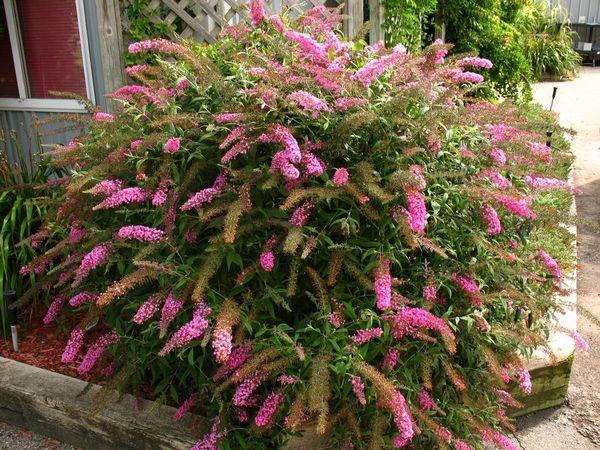
Wilson
The branches of this variety are drooping, the bush looks like a weeping willow. Lavender inflorescences.
Lovely
The petals are purple, the inflorescences are large. The bush blooms in mid-August.
White-flowered
Petals are white, pyramidal inflorescences. The bush is medium-sized, it grows up to 2.5 m in height.
Alternate-leaved
This variety belongs to almost wild shrubs that grow in their natural environment. The height of the shrub is about 4 m. The flowers are small, lavender. The flowering period is very short and does not exceed 25 days.
Snowy
The foliage of this variety is covered with thin white villi, so it seems that the leaves are very light. Lilac inflorescences.

Japanese
Medium-sized shrub 2-3 m high. Inflorescences are collected in panicles of small lavender flowers, exuding a strong honey aroma.
Spherical
Unlike most varieties, in this variety, the inflorescences are not collected in panicles, but are presented in a spherical shape. The shade of the petals is intense yellow.
Tricolor
Inflorescences of a multi-colored shade, a medium-sized bush, grows in height up to 2.5 m.
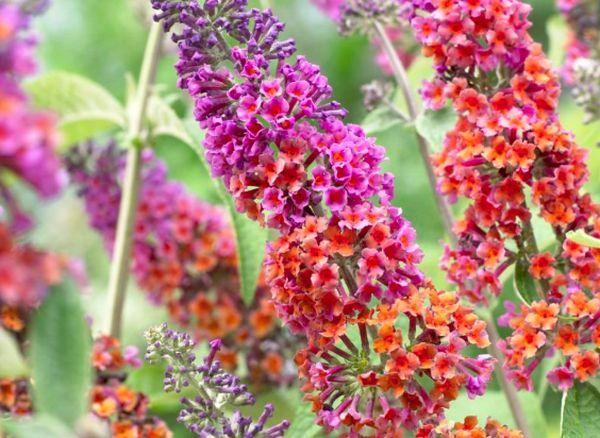
Volatile
The shrub grows to a height of 3 m. In some cases, the plant height can reach 5 m. Due to the abundant flowering, the branches are drooping. The inflorescences are lilac with a rich honey aroma that attracts insects. The flowering period occurs at the end of summer.
Indian
Indian buddleya belongs to bonsai and is grown at home. This variety belongs to the photophilous, and if the house does not have enough sunlight, for example, in winter and autumn, additional lighting must be turned on.
Outdoor planting
Planting buddley outdoors is easy. This plant is very unpretentious and quickly begins to grow after transplanting to a permanent place.
Seat selection
Buddleya belongs to light-loving plants, so it is recommended to plant a shrub in open sunny areas. The shrub does not like drafts, so the planting site for seedlings should be protected from cold winds.
Soil requirements
Buddley is best planted on fertile and well-drained soils with neutral acidity.
Landing dates
The most favorable time for transplanting a plant to a permanent place is the end of April, when the snow has melted and the soil has warmed up enough. Especially if cuttings or seedlings grown from seeds are planted. You can plant a shrub in the fall, but if it is already a large enough seedling, or planting is done by dividing the bush.
How to plant
It is not difficult to plant a shrub, the main thing is to adhere to all the rules of agricultural technology for planting a plant. It is important to remember if the shrub grows strongly, so if you plan to plant several bushes nearby, the distance between them should be at least 40 cm.
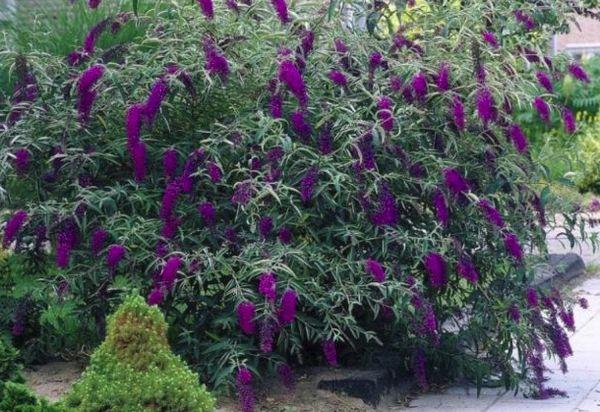
The process of planting buddley in open ground:
- Dig a hole 50 cm deep.
- Fill drainage and mineral fertilizers to the bottom.
- Mix a small amount of rotted manure and soil, cover the drainage layer.
- Spread the roots of the seedling, carefully put it in the hole.
- Cover with soil.
Lightly compact the soil near the trunk. At the end of planting, water the bush with plenty of warm water. If the plant was planted in the fall, then you can also mulch the soil.
Care
Subject to all the rules for the care of buddleya will bloom profusely and for a long time.
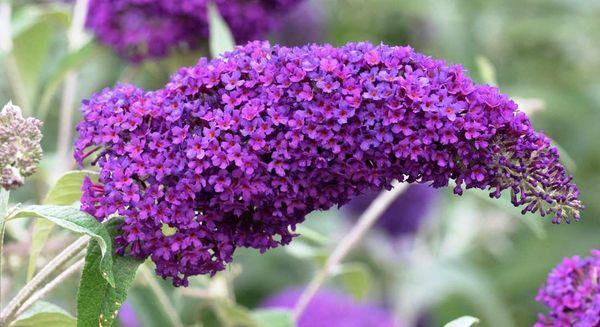
Watering
The shrub belongs to drought-resistant crops and tolerates heat well. But if the drought lasts a long time, it is still worth watering the plant several times a week with plenty of water.
Top dressing
Mineral fertilizers are added to the soil for flowering shrubs. With regular feeding, flowering will be more abundant. Also, the bushes can be watered with wood ash diluted in water.
Pruning
Like most shrubs, buddley needs to be pruned every year.
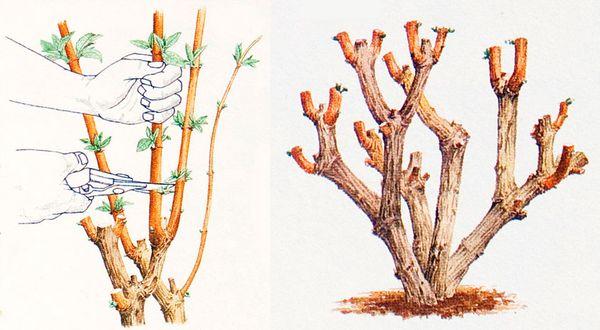
Necessity
The plant must be cut off. If this is not done, the branches stretch out and become thin, and the shrub itself practically stops growing. Regular pruning will increase flowering and keep the bush from growing.
The right time
Formative pruning of the shrub is carried out in the spring. And in the fall, dry and damaged branches are removed.
Optimal pruning scheme
As the inflorescences fade, they are cut off. Formative pruning is carried out in the spring. Tall varieties are cut so that 90 cm of stems remain from the root. In undersized, 30 cm of stems are left, the rest is removed.
How to care after
After spring pruning, nitrogen-containing fertilizing must be applied to the soil under the bushes so that the plant begins to grow faster and it is easier for it to survive pruning.
Preparing for winter
Buddleya is not the most frost-resistant plant species, therefore, before the onset of winter, you need to think about sheltering a shrub.
Middle lane
In the middle lane, the shrub overwinters normally even without shelter, but it is still better to mulch the soil before the onset of cold weather or cover the soil with spruce branches.
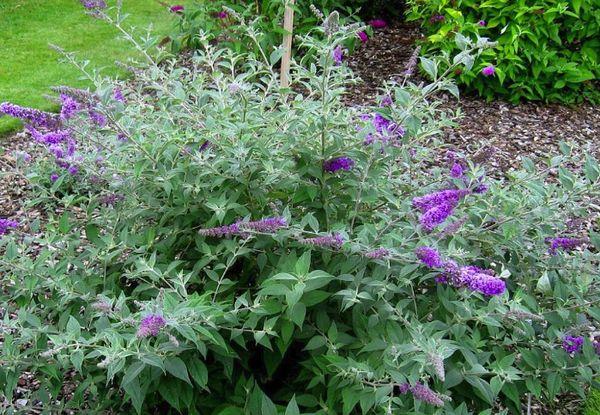
Volga region
In the Volga region, the plant can be covered according to the same principle as in the middle lane.
Siberia and the Urals
When grown in Siberia and the Urals, the buddley must be well covered, otherwise it will die.
Shelter material and technology
In regions where winters are not very harsh, you can simply mulch the soil or cover the soil and part of the trunk with spruce branches with a thick layer. In northern latitudes, it is better to make a mini-greenhouse. Install wooden beams and stretch plastic wrap or agrofibre over them. Then cover with fir branches.
Transfer
The buddley does not need frequent transplantation. The plant can constantly grow in one place. You can transplant a shrub if it has grown a lot and interferes with the growth of nearby plants.
Reproduction
Buddley is most often propagated in two ways - with the help of seeds or by cuttings. Both methods are quite simple and do not require serious efforts to grow a shrub.
Cuttings
Cuttings are carried out in the spring. Cut off green cuttings 20 cm long. Plant them in the soil and water abundantly. Then cover with cut bottles to create a greenhouse effect. After a few weeks, the cuttings will give roots. After two years, the seedlings are fully formed and can be planted.
Seeds
With the seed method of planting, the shrub begins to bloom only in the 2-3rd year. The planting material is planted in containers at home. To make the seeds sprout faster, they are covered with cling film. When the seedlings grow up, they are transplanted to the street. For the winter, it is imperative to cover young bushes, they are very vulnerable and may not survive frost.
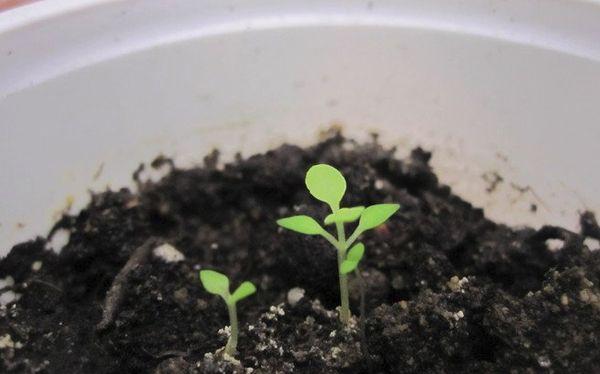
Diseases and pests
When growing a shrub, sometimes you have to deal with insects and diseases.
Whitefly
The whitefly appears in dry weather. Insecticides are used to destroy the pest.
Spider mite
With a spider mite, severely damaged branches are cut off, and the bushes themselves are sprayed with chemicals in the evening.
Collection and storage of seeds
Seeds are harvested in September-October, when the shrub has faded. But collecting them is very difficult, and seedlings rarely appear from them. Your best bet is to buy them from a store. It is recommended to store the planting material in the refrigerator.
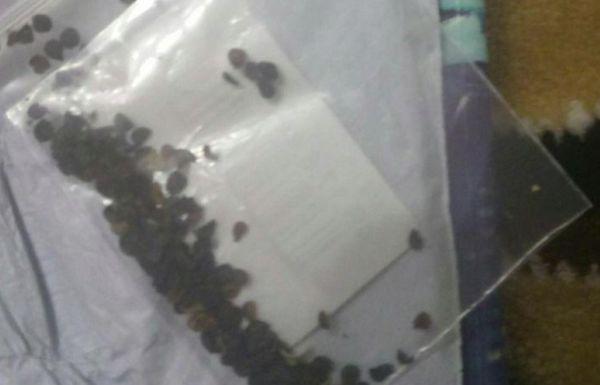
Possible mistakes
Buddley landing errors:
- Plant seedlings in cold soil.
- Do not cover bushes for the winter.
- Disregard mineral and organic fertilizing.
- Forget about pruning the bush.
Although buddleya belongs to unpretentious plants, many summer residents make mistakes when growing this shrub.
Use in garden design
Buddleya fits perfectly into landscape design. It is often used as a hedge. The plant combines well with other flower crops, especially undersized ones.
Reviews
Katerina, 31 years old: “Buddleya is a real find. I planted a bush on my site a few years ago. It is not difficult to look after him, buddleya grows well with minimal maintenance. The inflorescences are very beautiful and fragrant, the shrub immediately attracts attention. "
Marina, 28 years old: “I have been engaged in flower cultivation for a long time, of all the flower bushes buddleya is the most favorite. It blooms for a long time, the inflorescences are very beautiful, similar to lilacs. The shrub is unpretentious. However, collecting seeds for reproduction is useless, they do not germinate. "
